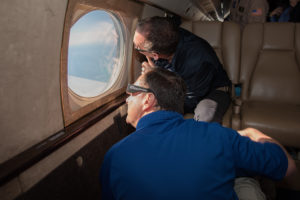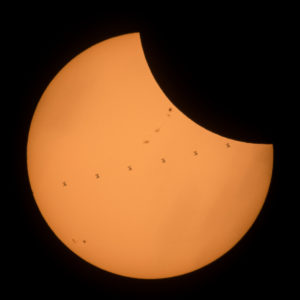On August 21, the first total solar eclipse across the continental U. S. in almost a century moved our nation to hit the pause button of our hectic lives, to look upwards, and be part of a celestial moment provided by nature to all of us. As the leader of NASA Science, I also was transfixed. But I was also holding my breath hoping that the celestial event would pass without incident. NASA had done all we could to prepare. Requiring all of our 120 official events to have safety plans prepared and requesting our partners across the land to do so too. When we identified any uncertified solar viewing glasses we could find, we worked with the American Astronomical Society to spread the word so everybody would be safe that day.

Yet, across this great land for those 90 minutes of lunar passage, celebrations and exclamations of awe and inspiration brought our country together. Connections on a deeply human level were felt. People with glasses you met for the first time became part of that experience, no matter their background, their history – we all felt like one. Afterwards, while hundreds of thousands of homeward bound citizens endured hours of traffic–the day passed without any major incident, and I felt a lot better.

As a professional scientist, I have devoted my life to learning about the mysteries of the universe and inspiring others to seek answers. I knew that previous eclipses spurred scientific advances from luminaries like Edison, Eddington, and Einstein. Imagine my elation that the object of my lifelong pursuit provided such a great opportunity for science today and it brought together the Nation that I love so much, looking at the star that affects them each and every day. Science is not only inspiring, it is imminently useful in our daily lives. Our investments in space science pay dividends for decades to come. They result in better forecasts for Earth-based quantities that affect our lives on all time-scales, they safe lives, they are at the heart of new companies, and support National defense.

My sincere hope is this eclipse inspires a new movement of citizen scientists, science hobbyists who do important work together, just because they can. All NASA science data is online, freely accessible and ready for use. In fact, never before in human history do we have the entire span of knowledge at our literal fingertips. These data enable citizens of any type to do what professional scientists do: true science starts with questions or suspicions, and with an open mind. Yes, all questions are ok to ask. In the realm of science, doubt is not feared, but welcomed. In the end, we don’t believe in the opinions of individuals, but in what nature answers us to these questions through experiments that we do in our laboratories and also in flight. These answers again should always be open to scrutiny and doubt.

When new data are observed, new questions are asked, and knowledge is expanded. In 2014, headlines shocked with the National Science Foundation survey results that one out of every four adults in the U.S. could not accurately answer whether the Earth rotated around the Sun or Sun circled the Earth. That one metric created a NASA science literacy goal to improve results by the 2020 survey. My hope is that with this year’s total solar eclipse the public has an improved sense of the relationship of our Earth/Moon/Solar system. To everybody who does not believe in these scientific facts, here is a simple challenge: predict the next solar eclipse using your own theory!

Just as the “can do” optimistic culture of NASA attracted me to leave a tenured position in academia, NASA’s involvement in the eclipse across 14 states, in 6900 libraries, over 200 museums, planetaria and science centers, 40 Challenger Centers, NASA Visitor Centers, national parks, zoos, and even baseball stadiums provided a connection. We had over 5 billion engagements of social media, more than 50 million unique viewers watched our TV broadcast, and another 50 million users watched our YouTube channel either real-time or since then.

Previous total solar eclipses have spawned cadres of chasers that travel the globe seeking those brief eerie minutes of totality. But my hope is that this eclipse creates a new appreciation for and relationship with our nearest star and the tool that allow us to learn about nature. Learning about nature is inspiring and important and always rewarding. My only suggestions: Start making plans for the next total solar eclipse in this country on April 8, 2024. Check out science.nasa.gov and nasa.gov to learn about this past eclipse, the next one, as well as other science!
